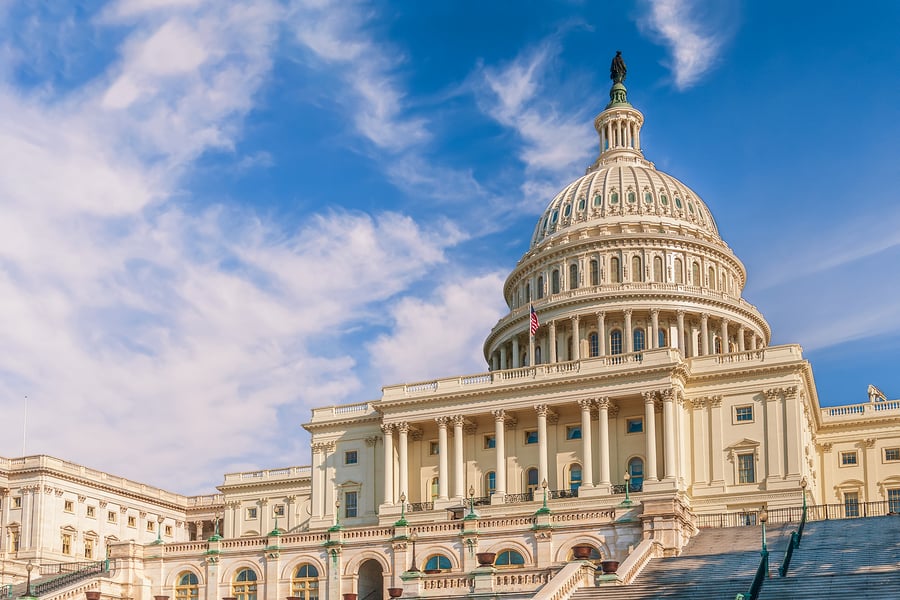Candidate Profile: Tim Walz on Energy
On August 6, 2024, Democratic presidential nominee Kamala Harris chose Minnesota Governor Tim Walz as her vice presidential running mate. As a Congressman representing Minnesota’s First District, and more recently as Governor of the State of Minnesota, Walz has consistently pursued policies that threaten the ability of people to access affordable and reliable energy.
Early Career in U.S. House of Representatives
In 2009, Walz backed the Waxman-Markey cap-and-trade bill that would have killed 2.5 million jobs and raised electricity prices by 90%. The bill stalled in Congress as Americans understood the large economic downsides of it.
U.S. House of Representatives 2015-2016
From 2015 through 2016, Walz received a score of 7% on the American Energy Alliance’s Energy Scorecard, indicating that he consistently voted in opposition to policies that would ensure all Americans have access to affordable and reliable energy.
Notably, Walz voted against H.R. 712, a bill that would take on the “sue and settle” practice commonly used by the Obama Administration and special interest groups; particularly environmental activists. At the time, over a quarter of major Environmental Protection Agency (EPA) regulations stemmed from special interest lawsuit settlements, a practice that bypasses normal regulatory procedures and Constitutional separations of power including Congressional oversight. The bill aimed to address this by increasing transparency. It would require public disclosure of settlement details and allow for a 60-day public comment period before such agreements are filed in court. This would have enhanced openness and democratic oversight in the regulatory process.
The EPA has aggressively pursued a regulatory agenda that not only impedes human progress but also fails to tackle the most pressing environmental issues. For instance, the Mercury and Air Toxics Standards (MATS) rule, according to EPA estimates, would have imposed annual costs of $10 billion while providing only $6 million in benefits from reduced air toxics, raising doubts about the efficiency of the regulation in addressing harmful pollution. Moreover, many of the EPA’s regulations rely on scientific data that the agency withholds, preventing independent verification of its findings. Walz voted against H.R. 1030, a bill designed to increase transparency by requiring the EPA to make the scientific and technical information supporting its regulations publicly available. This legislation, which passed the House despite Walz’s opposition, would have been a crucial step toward ensuring regulatory transparency and curbing the use of undisclosed science if it had become law. Walz supported secret science.
He also voted against H.R. 2028, the FY 2016 Energy and Water Appropriations bill, which allocated funds to various agencies and programs, including the Department of Energy (DOE). The American Energy Alliance had previously issued “Top 8 Ways to Rein in DOE Spending” to guide the House’s consideration of this bill. An amendment proposed by Rep. Byrne aimed to cut funding for the DOE Office of Energy Efficiency and Renewable Energy, which promotes and subsidizes “clean energy” as defined by government officials. The amendment argues that the government should not be involved in commercializing products it labels as “clean.” By significantly reducing the government’s role, this amendment would have shifted more decision-making to the American people and saved $1.6 billion. Walz voted no.
Walz voted against H.R. 1029 which proposed several sensible reforms to the EPA Science Advisory Board. The EPA Science Advisory Board was established by Congress in 1978 to guide the agency in utilizing science for regulatory rulemaking. H.R. 1029 would have enhanced the board’s operations by setting out qualifications for members and mandating greater transparency during the nomination process by requiring the disclosure of any potential conflicts of interest, including receipt of EPA grants. These measures were designed to foster a more independent, fair, and transparent board, ultimately improving the use of science at the EPA.
During the House’s consideration of the National Defense Authorization Act for FY 2017, Rep. Buck proposed an amendment aimed at ensuring the responsible and effective use of taxpayer dollars in defense energy acquisition. The American Energy Alliance encouraged all members to support Buck’s alternative energy amendment. Rep. Buck’s amendment required the Department of Defense (DoD) to evaluate the total cost of using alternative fuels compared to conventional ones. This evaluation would include not just the upfront cost of alternative fuels, but also any subsidies, tax credits, and additional operational and maintenance expenses. The amendment was a matter of common sense, emphasizing that military acquisitions should be based on cost-effectiveness rather than policy agendas. If the DoD chooses to use alternative fuels, it should be for practical reasons related to tactics, strategy, economics, and logistics. This amendment was designed to ensure that our military is properly equipped while promoting the responsible use of taxpayer funds. Walz did not support the amendment.
He also opposed H.R. 161, the Natural Gas Pipeline Permitting Reform Act, which aimed to streamline the permitting process to ensure that natural gas pipelines are reviewed promptly by the Federal Energy Regulatory Commission (FERC). Investing in natural gas pipeline infrastructure is crucial for delivering affordable and reliable energy to all Americans. The urgent need for these reforms was highlighted during the winter of 2014 when the Northeast faced significant challenges due to inadequate infrastructure during the polar vortex. The existing infrastructure was pushed to its limits, resulting in an inability to supply natural gas to homes, businesses, and power plants simultaneously, which caused a dramatic increase in prices. He also voted against H.R. 427, the Regulations from the Executive in Need of Scrutiny Act ( REINS Act). This bill would have increased accountability and transparency in the federal regulatory process. Additionally, he voted against H.R. 351, the LNG Permitting Certainty and Transparency Act, which would expedite the approval of liquefied natural gas (LNG) export projects.
As the House deliberated on the National Defense Authorization Act for FY 2017, Rep. Fleming proposed an amendment to ensure that national defense funds are allocated to critical defense activities rather than the administration’s climate agenda. The American Energy Alliance encouraged all members to support Fleming’s climate change amendment. Rep. Fleming’s amendment was aimed at preventing the Department of Defense (DoD) from using funds to implement two executive orders that imposed a range of climate-related policies. These orders would increase costs, complicate the acquisition process, and add logistical, planning, and operational burdens, ultimately detracting from the DoD’s core mission of national defense by adding unnecessary bureaucracy. Fleming’s amendment sought to allow the DoD to focus on protecting Americans by using the most efficient and reliable energy resources available. The amendment passed despite Walz’s opposition.
During this session, the House reviewed the America COMPETES Reauthorization Act of 2015, a bill designed to fund basic research across various scientific fields. A key provision in the bill prevents the DOE from collaborating with the DoD to subsidize biofuel production through military applications. An amendment proposed by Rep. Bonamici sought to remove this provision. The DOE and DoD have spent substantial amounts of money subsidizing costly and exotic biofuels by purchasing them for military use. The COMPETES Reauthorization Act aims to halt this wasteful practice, but the Bonamici amendment would allow it to continue. The American Energy Alliance urged members to vote NO on the Bonamici amendment. Walz supported the amendment.
H.Con.Res. 89, introduced by Rep. Scalise, expressed Congress’ view that a federal carbon tax would harm the economy. This resolution represented a crucial opportunity for Congress to stand up for affordable and reliable energy. A carbon tax targets the use of natural gas, oil, and coal, which accounts for over 80% of America’s energy consumption. Such a tax would significantly damage the economy and increase energy costs for American families. Census data shows that families earning less than $10,000 per year spend nearly 70% of their after-tax income on energy, while those earning between $10,000 and $30,000 spend over 20%. Despite its goals, a carbon tax would have minimal impact on global temperatures. A study by the Cato Institute found that even with a complete reduction in U.S. carbon dioxide emissions by 2050, the global average temperature would only decrease by about 0.1 degree Celsius by 2100. This resolution provided a key opportunity for Representatives to oppose such taxes. The American Energy Alliance strongly encouraged all Members of Congress to vote YES on H.Con.Res. 89. Walz voted against it.
During this session, the House voted on H.R. 4768, the Separation of Powers Restoration Act (SOPRA). In Chevron v. NRDC, the Supreme Court established that courts should defer to agency interpretations of statutes unless those interpretations are unreasonable. This principle, known as “Chevron deference,” allowed regulatory agencies to extend their authority beyond Congressional intent, contributing to executive branch overreach and disrupting the balance of power among the three branches of government. The EPA, in particular, leveraged Chevron deference to stretch the Clean Air Act and Clean Water Act to support its extensive and costly regulatory agenda. H.R. 4768 sought to counter this by mandating that courts review all questions of statutory interpretation “de novo,” or independently of the agencies’ own interpretations. This would have ended Chevron deference and required agencies to adopt a more conservative approach to statutory interpretation. In the realms of energy and environment, this reform would have been a significant win for constitutionalists and free market advocates, potentially undermining the viability of many EPA regulations, including the Clean Power Plan. H.R. 4768 represented a sensible approach to regulatory reform, aimed at restoring the balance of power that had increasingly favored the executive branch. The American Energy Alliance urged all Representatives to vote YES on H.R. 4768. The bill passed the House despite Walz’s opposition.
He also voted in favor of a $1.1 trillion omnibus spending bill and a $650 billion tax extenders package. The American Energy Alliance advised all members to oppose any legislation that once again extended the wind Production Tax Credit (PTC) and the solar Investment Tax Credit (ITC), or that allowed funds to be redirected to the Green Climate Fund. According to the Joint Committee on Taxation, at the time, the extensions of the PTC and ITC alone would cost taxpayers nearly $24 billion. Although we supported lifting the long-standing ban on oil exports, the American Energy Alliance scored against the omnibus spending bill.
U.S. House of Representatives 2017 – 2018
During the 2017 – 2018 session, Walz received a score of 0% on the American Energy Alliance’s Energy Scorecard, meaning he never voted in favor of policies that would ensure access to affordable and reliable energy for all Americans.
Notably, Walz voted against H.J. Res. 44, a Congressional Review Act (CRA) resolution aimed at overturning the Bureau of Land Management’s “Planning 2.0” rule. This rule redefined the “multiple use” concept for federal lands established by the Federal Land Policy and Management Act of 1976 (FLPMA) and reduced the role of state and local officials in land management by centralizing more authority at the federal level. The American Energy Alliance urged Representatives to vote YES to repeal this unnecessary regulation from the Obama era.
He also voted against CRA resolutions to repeal the BLM’s methane rule, an unnecessary regulation that could lead to job losses and higher energy costs for American families. The CRA enables Congress to block certain regulatory actions by passing a joint resolution of disapproval within 60 legislative days of a rule’s publication, preventing agencies from enacting similar rules. The BLM methane rule, finalized in November 2016, exemplified costly regulatory overreach and is a prime candidate for review under the CRA. According to the American Action Forum, this rule would have cost $1.8 billion.
Governor of Minnesota
Gov. Walz ran as the Minnesota Democratic-Farmer-Labor Party nominee in 2018. Its platform opposed all nuclear power, opposed fracking, and supported a carbon tax.
Walz was sworn in as governor of Minnesota on January 7, 2019. In a campaign announcement in 2022, Walz unveiled a 69-page plan for fighting climate change that he pledged would be a priority in a second term if voters reelected him. Politico reported that “it took Governor Tim Walz all of a month after being sworn into a second term to sign a sweeping clean energy bill that put in place one of the Midwest’s most progressive climate policies.”
Analysts at Always On Energy Research pointed out that Walz has a pattern of presenting himself as moderate while shifting left on energy issues when given the chance. During his 2018 gubernatorial campaign, Walz advocated for a modest increase in the gas tax. However, once elected he proposed a 20-cent-per-gallon tax increase, representing a 70% hike. Similarly, while he initially supported replacing the aging Enbridge Line 3 oil pipeline to protect the environment and increase oil flow into the country, he reversed course once in office. Despite unanimous approval from the Public Utilities Commission, Walz’s administration delayed the project, even though there was good reason to believe that postponing the replacement posed a greater environmental risk than implementing a new, safer pipeline.
In his 2018 campaign, Walz pledged to implement wind and solar mandates requiring 50% of Minnesota’s electricity to come from these sources by 2030. By early 2019, he had shifted to a 100% carbon-free mandate by 2050. In 2021, he accelerated this target, moving it up to 2040, and further increased the requirement to 25% renewable energy by 2025. Minnesota’s green energy mandates helped lead to a significant rise in Minnesota’s electricity prices, which have grown 1.67 times faster than the national average since the original wind and solar mandate was enacted in 2007. Analysts estimated that Walz’s wind and solar mandates will cost $313 billion through 2050. This would result in an increase in electricity costs for families by $1,642 annually, or approximately $136 per month.
Walz also prioritized expanding the region’s high-voltage transmission grid to support a shift towards greater wind and solar power. He was one of four Midwestern governors who worked behind the scenes focusing on regional transmission expansion by placing pressure on the Midcontinent Independent System Operator. Walz also supported subsidies for electric vehicles and other low-carbon technologies and implemented energy regulations for buildings.
In 2021, Walz signed an executive order adopting California’s 2012 “clean car” rules, effectively establishing an electric vehicle mandate. Walz encountered significant resistance to these rules, which were aimed at requiring the adoption of electric and hybrid vehicles, including a major legal challenge from auto dealers. Signed in 2021, and effective from January of this year, the rules mandate that Minnesota increase the proportion of electric vehicles to 20% by 2030, meaning one in five cars must be electric by the end of the decade. Walz pushed through the EV mandates by leveraging a provision in existing law that the Upper Midwest Law Center (UMLC) contends did not authorize the agency to regulate statewide greenhouse gas emissions from vehicles.
In 2022, Gov. Tim Walz proposed adopting California’s “Low Carbon Fuel Standard” (LCFS), a policy aimed at increasing gas prices and effectively imposing an additional tax on Minnesota residents. Although proponents of the LCFS argue that there is “no correlation between the policy and gas prices,” a recent report from California acknowledges that this policy will raise gasoline costs by 47 cents per gallon in 2025 and 52 cents per gallon in 2026.
In 2022, Walz celebrated the Biden administration’s decision to allow year-round sales of E15 (gasoline/ethanol blend). The piecemeal effect of such a rule causes problems for refiners as different equipment will be needed for the higher ethanol blend and not all refiners have the capability to blend ethanol because of its corrosiveness, which could cause shortages of gasoline during the summer months in the Midwest. Despite criticism of the “Balkanization” of fuel supplies which has distorted markets and hurt consumers, the Biden Administration is pursuing yet another policy that will exacerbate the problems, even as the United States is losing refining capacity. U.S. consumers will pay the price.
The damage of Gov. Walz’s energy policies have not been contained to Minnesota. The governor’s climate policies have also faced opposition from neighboring North Dakota. Gov. Doug Burgum of North Dakota has objected to the Minnesota climate law that would eventually prohibit Minnesota utilities from purchasing coal or gas-fired power produced in other states, even if the power is generated from fossil fuels with emissions captured and stored. In June, the North Dakota Industrial Commission, led by Gov. Burgum, submitted formal comments to the Minnesota Public Utilities Commission, labeling this provision of the law as “constitutionally suspect” and “an improper attempt by Minnesota to impose its internal energy policy decisions on neighboring states, in clear violation of those states’ rights and sovereignty.”




